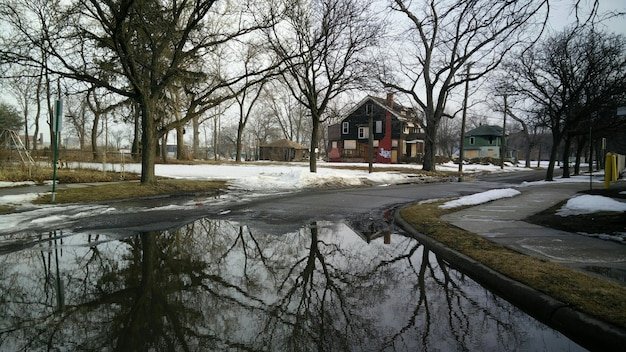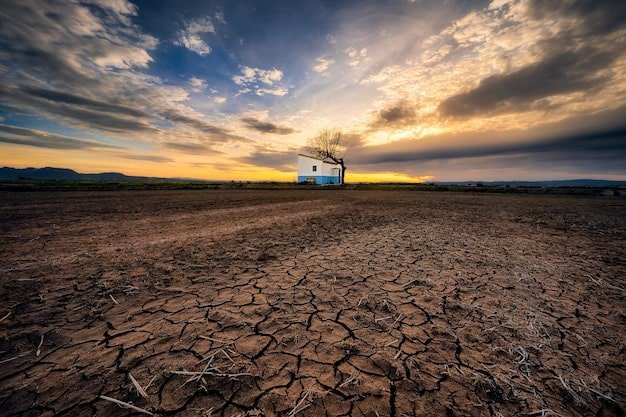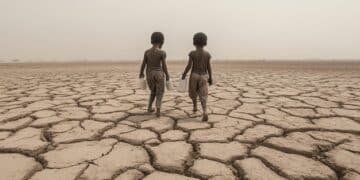Climate Change and Debt: Protecting Your Finances from the Unexpected

The Impact of Climate Change on Personal Debt: Preparing for the Unexpected involves understanding how environmental shifts can lead to increased expenses and financial instability, requiring proactive strategies to manage and mitigate these risks.
The world is changing, and not just in terms of weather patterns. The Impact of Climate Change on Personal Debt: Preparing for the Unexpected is a growing concern as environmental shifts create unique financial challenges. Are you ready for the unexpected costs of a changing climate?
Understanding the Climate Change-Debt Connection
Climate change is often discussed in terms of environmental science and policy, but its impact stretches far beyond these areas. One less obvious, yet increasingly significant, consequence is its effect on personal debt. Let’s delve into the connection between these two seemingly distinct issues.
The relationship between climate change and personal debt is multifaceted. It primarily stems from the increased frequency and intensity of extreme weather events, such as hurricanes, floods, wildfires, and droughts. These events can lead to substantial financial burdens for individuals and communities.
How Extreme Weather Events Increase Debt
Extreme weather events can wreak havoc on homes, businesses, and infrastructure, leading to costly repairs and replacements. For many, these expenses are simply too high to cover out-of-pocket, forcing them to take on debt.
- Property Damage: Floods, hurricanes, and wildfires can cause extensive damage to homes and personal property, leading to significant repair or replacement costs.
- Business Disruption: Small businesses are particularly vulnerable to weather-related disruptions, which can result in lost revenue and increased debt.
- Crop Losses: Farmers facing droughts or floods may experience significant crop losses, impacting their income and their ability to repay loans.
- Infrastructure Strain: Damage to roads, bridges, and other infrastructure can impact access to essential services and require costly repairs, often funded through increased taxes or fees that contribute to household debt.
Ultimately, climate change acts as a threat multiplier, exacerbating existing financial vulnerabilities and pushing more individuals and families into debt.
The Rising Costs of Climate-Sensitive Resources
Beyond immediate disaster relief, climate change is also driving up the costs of essential resources like water and food. These rising costs, in turn, contribute to increased personal debt levels.
As temperatures rise and rainfall patterns shift, water scarcity becomes an increasingly pressing issue in many regions. This scarcity leads to higher water prices, placing a greater financial burden on households and businesses.

Food Price Inflation Due to Climate Change
Climate change also impacts agricultural production, leading to higher food prices. Droughts, floods, and extreme temperatures can damage crops, reduce yields, and disrupt supply chains. This can affect consumers directly through increased grocery bills
- Drought Impacts: Droughts can lead to crop failures and livestock losses, driving up the prices of staple foods like grains, fruits, and vegetables.
- Transportation Costs: Extreme weather events can disrupt transportation networks, increasing the cost of moving food from farms to markets.
- Insurance Premiums: Farmers facing increased risks from climate change may see higher insurance premiums, which can translate to higher food costs for consumers.
By understanding these direct and indirect impacts, individuals can begin to take proactive steps to protect their finances and prepare for the challenges ahead.
Insurance Challenges in a Changing Climate
Insurance is often seen as a safety net, but climate change is putting significant pressure on the insurance industry. As risks increase, premiums are rising, and in some cases, coverage is becoming harder to obtain. This creates a financial burden and increases vulnerability to debt.
Insurance companies are reassessing their risk models in light of climate change. As extreme weather events become more frequent and severe, the costs of payouts increase, leading to higher premiums for policyholders.
The Impact on Homeowners
Homeowners in areas prone to flooding, wildfires, or hurricanes are particularly affected. Insurance premiums in these regions have been rising steadily, making homeownership more expensive and potentially pushing some homeowners into debt.
- Higher Premiums: Insurance companies are increasing premiums to reflect the higher risks associated with climate change.
- Coverage Limitations: Some insurers are limiting coverage for specific types of damage or excluding coverage altogether in high-risk areas.
- Increased Deductibles: Insurers may also increase deductibles, requiring homeowners to pay more out-of-pocket before coverage kicks in.
These increased costs and coverage limitations make it more difficult for individuals to protect their assets and manage their financial risks in a changing climate.
Adapting Your Financial Strategy
Given these challenges, it’s essential to adapt your financial strategy to account for the impacts of climate change. This involves taking proactive steps to reduce your vulnerability to debt and build financial resilience.
Start by assessing your exposure to climate-related risks. Consider the location of your home and business, their vulnerability to extreme weather events, and the potential for rising resource costs.

Building a Climate-Resilient Financial Plan
Once you understand your risks, you can develop a financial plan that incorporates climate-related considerations. This plan should include strategies for managing debt, building savings, and protecting your assets.
- Debt Management: Prioritize paying down high-interest debt and avoid taking on new debt unless absolutely necessary.
- Emergency Savings: Build an emergency fund to cover unexpected expenses, such as weather-related repairs or temporary loss of income.
- Diversification: Diversify your investments to reduce your exposure to climate-sensitive assets.
- Home Improvements: invest in home improvements that reduce your vulnerability to hazards.
By taking these steps, you can reduce your financial vulnerability and adapt your strategy to protect your finances.
Government and Community Resources
Individuals are not alone in addressing the financial impacts of climate change. Government agencies and community organizations offer a range of resources to help people prepare for and recover from climate-related disasters.
Government agencies like FEMA (Federal Emergency Management Agency) and the Small Business Administration (SBA) provide assistance to individuals and businesses affected by disasters. This assistance can include grants, loans, and other forms of financial support.
How to Access Available Support
Many community organizations offer programs and services to help people build financial resilience. These can include financial counseling, job training, and access to affordable housing.
- FEMA Assistance: FEMA provides assistance to individuals and households affected by disasters, including help with housing, medical expenses, and other essential needs.
- SBA Loans: The SBA offers disaster loans to businesses and homeowners to help them repair or replace damaged property.
- Community Programs: Local non-profits often provide financial counseling, job training, and other resources to help people build financial stability.
Be informed about the available support and leverage it to navigate the challenges.
Long-Term Strategies for Financial Sustainability
Addressing the financial impacts of climate change requires a long-term perspective. This means not only adapting your individual financial strategies but also advocating for broader policy changes that promote financial sustainability.
Investing in climate-resilient infrastructure, such as flood defenses and drought-resistant water systems, is essential for protecting communities and reducing the financial risks associated with climate change.
Advocating for Policy Changes
Supporting policies that promote clean energy, reduce carbon emissions, and encourage sustainable land use can help mitigate climate change and reduce its long-term financial impacts.
- Climate Resilience: Advocate for policies that promote climate resilience at the local, state, and national levels.
- Clean Energy: Support policies that promote clean energy and reduce dependence on fossil fuels.
- Sustainable Land Use: Encourage sustainable land use practices that protect natural resources and reduce vulnerability to disasters.
By taking a long-term perspective and working together, we can build a more financially sustainable future in the face of climate change.
| Key Point | Brief Description |
|---|---|
| 💸 Extreme Weather | Increases property damage and business disruption, leading to debt. |
| 💧 Rising Resource Costs | Water scarcity and food price inflation add to household financial strain. |
| 🛡️ Insurance Challenges | Higher premiums and limited coverage make protection difficult. |
| 🌱 Adapting Strategies | Build savings, manage debt, and advocate for supportive policies. |
Frequently Asked Questions
▼
▼
▼
▼
▼
Conclusion
Climate change presents not only environmental challenges, but also significant financial risks. By understanding these risks and adapting your financial strategy, you can build resilience and protect your assets. Government resources and community programs are there to help navigate those challenges. Long-term strategies, including advocating for policy changes that promote sustainability, can mitigate the financial impacts of climate change and ensure a sustainable future.





